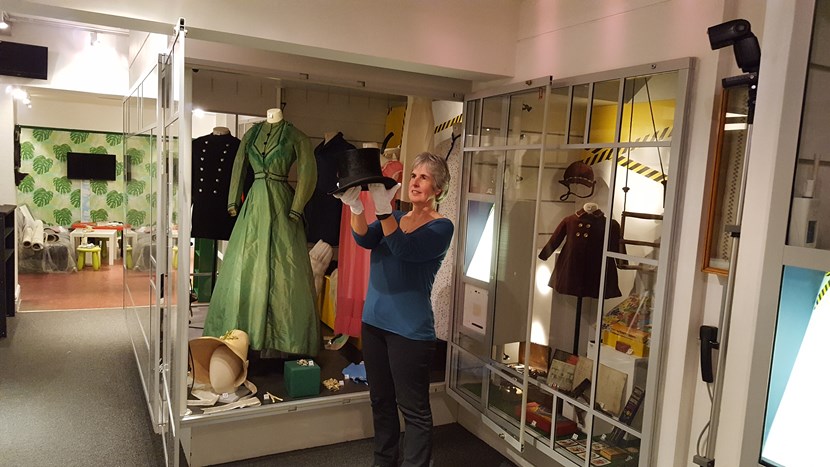
25 Jan 2019
Step into the Danger Zone as museum explores history’s hidden hazards
Explosive sweets, radioactive ornaments and poisonous hats are all among an extraordinary collection of historic hazards revealed in a new exhibition in Leeds.
Danger Zone, which opens at Kirkstall’s Abbey House Museum tomorrow (January 26) explores some of the surprising everyday threats that were hiding in plain sight in homes and workplaces over the past 150 years.
Looking at the potentially deadly risks people unwittingly took through exposure to seemingly innocuous items like medicines, food and even the clothes they wore, the exhibition will also chart how the evolution of health and safety has helped us be more aware of the potential perils we continue to discover today.
Among the objects on display will be a bottle of potassium chlorate pastilles used to soothe sore throats in the 1880s. Although supposedly beneficial, as the name suggests, the sweets actually contained potassium chlorate which could spontaneously combust in the owner’s pocket.
The bottle is displayed alongside a dapper-looking top hat containing mercury, a material commonly used when the headgear was made in around 1840. As a consequence, workers who made hats were often aggressive due to heavy metal poisoning, the origin of the phrase ‘mad as a hatter.’
Also on display is a delicate glass centrepiece containing radioactive uranium, which was added to some glassware in the 19th century to give it a green tinge and help it stand out in the early evening light of a traditional Victorian home.
Kitty Ross, Leeds Museums and Galleries’ curator of social history, has been carefully searching through the collection to bring the enthralling exhibition together.
She said: “The sheer range of items we have on display really does illustrate how our perception and awareness of danger is something which continues to develop through the decades.
“In the past, materials like asbestos and mercury, which we now know to be hazardous, could be included in the most commonplace items, meaning people in all walks of life could fall victim to any manner of hidden risk.
“Although today we live in an age where most products are rigorously tested before they can be sold and workplaces are governed by strict health and safety legislation, danger is very much a constantly evolving concept and we are still identifying new risks and health hazards all the time.
“Every new danger we are able to spot helps inform our knowledge of the world around us so in their own small way, each of the items we have on display here has contributed to making our lives safer.”
Danger Zone also delves into the past to rediscover stories of some unfortunate accidents and incidents in and around Yorkshire.
Mint humbugs from the 1920s are used to illustrate a tragedy in Bradford in 1858, which saw a druggist’s apprentice accidentally coat humbugs with arsenic instead of sugar, resulting in the deaths of a number of people.
And a beautiful silver tea and coffee set is displayed, which was presented to James Wormald, a mining engineer, who prevented a disaster at the Sisters Pit at Garforth on March 19, 1873.
The exhibition also features a series of talks throughout the year inspired by the exhibition which will see experts examine subjects including traditional potions and remedies and how asbestos was used in the past.
Danger Zone runs at Abbey House Museum from Jan 26 until December 31. For more details including admission prices, opening hours and the programme of talks, please visit: https://www.leeds.gov.uk/museumsandgalleries/abbeyhouse/exhibitions/danger-zone
ENDS
For media enquiries, please contact:
Stuart Robinson
Communications Officer
Leeds City Council
Tel: 0113 378 9182 (please note my new number)
Email: stuart.robinson@leeds.gov.uk
www.leeds.gov.uk
For media enquiries contact:
Leeds City Council Communications team
communicationsteam@leeds.gov.uk